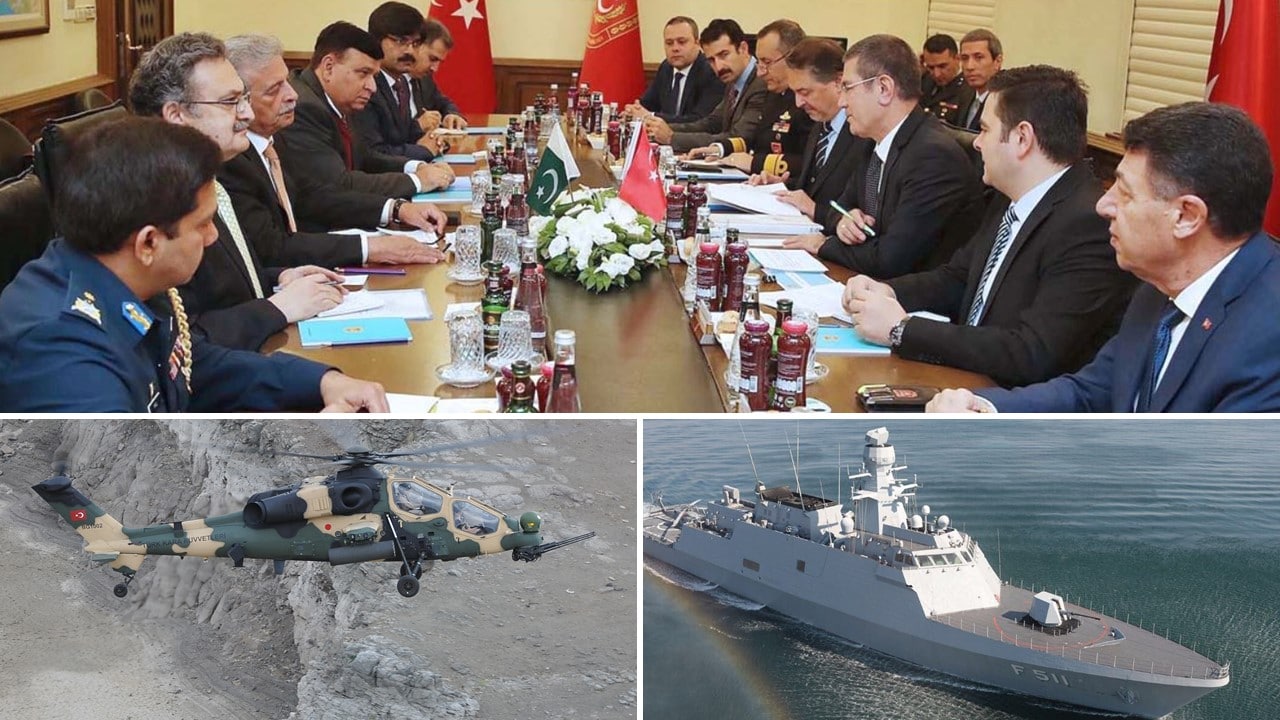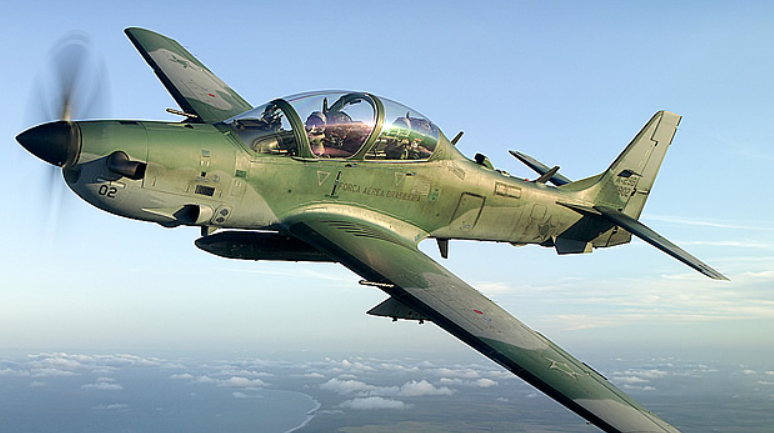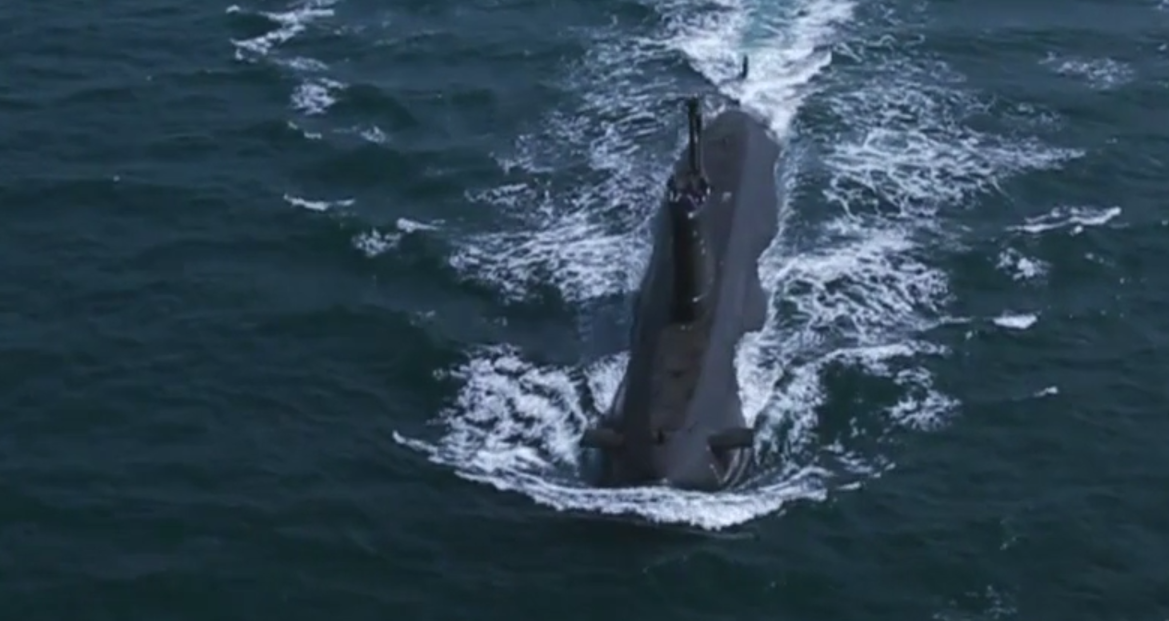2762Views 23Comments

Pakistan nearing finalization of T129, MILGEM from Turkey
Pakistan’s Minister of Defence Production (MoDP) Rana Tanveer Hussain paid an official two-day visit (24-26 November) to Turkey in a bid to review ongoing bilateral defence programs. The MoDP had met with Turkey’s Minister of National Defence Nurettin Canikli.
According to a press release from Pakistan’s Embassy to Ankara, the MoDP and his Turkish counterpart conducted a “comprehensive review of bilateral cooperation, particularly the ongoing defence industry projects between the two countries,” in which they agreed “that the growing level of bilateral cooperation was consistent with the vision of the leaders on both sides.”
The statement added that both sides “agreed to further increase mutual contact and exchange of visits with a view to realizing the full potential in defence collaboration and identifying new projects.”
On November 25, the MoDP informed Turkey’s state-owned new agency Anadolu Agency that Pakistan’s potential purchase of Turkish Aerospace Industries (TAI) T129 ATAK attack helicopters and four MILGEM (Milli Gemi: National Warship) naval vessels were major subjects of discussion on his current visit.
Regarding the ATAK, Hussain said, “It is in the pipeline … [the process is] 90 percent complete,” and that the matter proceeded to financial proposals, which are being examined by Pakistan.
As for the MILGEM, the MoDP said, “The process is completed and construction of the ship will start in the near future,” adding, “Technical and financial proposal was going to be open (sic) in Pakistan on Monday.” Two of the four ships will be constructed at Karachi Shipyard & Engineering Works (KSEW).
The MoDP also touched upon the Turkish Air Force’s (TuAF) order of 52 Super Mushshak screening trainers from Pakistan Aeronautical Complex (PAC), the contract for which was signed in May.
PAC also offered the JF-17 Thunder multi-role fighter to Turkey. Hussain states that Turkey is “considering this aircraft [JF-17], because they know in detail about this aircraft.” PAC produces the JF-17 in partnership with the Aviation Industry Corporation of China.
Notes & Comments:
Pakistan is among the Turkish defence industry’s prospective key markets. The electronics manufacturer Aselsan is supplying ASELPOD targeting pods for use on the JF-17 Thunder, software defined radios and electronic support measure (ESM) systems. Havelsan supplied Pakistan with various simulator systems, and it will also integrate its naval combat management system to Pakistan’s Agosta 90B submarines.
The defence contractor Savunma Teknolojileri Mühendislik ve Ticaret A.Ş. (STM) is the prime contractor managing the 17,000-ton Pakistan Navy Fleet Tanker (PNFT) and Agosta 90B upgrade programs at KSEW. STM is also providing port design and hydrographic/oceanographic survey services to Pakistan. In 2016, STM had hoped to extend its work with Pakistan to long-term programs, most notably the MILGEM, mini-diesel electric submarine (to replace the Cosmos MG110) and fast attack craft.
Based on the MoDP’s recent statements, the next marquee project involving STM will be the procurement of four MILGEM ships for the Pakistan Navy (PN). In May, STM CEO Davut Yilmaz had told Anadolu Agency that the ships would be a variant of the Ada corvette incorporating subsystems from Pakistan. The overall value of the program would be roughly $1 billion U.S. Pakistan signed a letter-of-intent to procure the vessels in May during the 2017 International Defence Exhibition and Fair in Istanbul.
The 2,300-ton MILGEM Ada corvette was designed for anti-submarine warfare (ASW). It is armed with two triple ASW torpedo tubes and sensors for surface and sub-surface situational awareness, two quad-cell launchers for anti-ship missiles (AShM), one 76-mm main gun, two stabilized weapon turrets and one Rolling Airframe Missile point-defence missile system. Specific configuration plans for the PN’s ships have not yet been revealed. Other MILGEM designs include the I-Class frigate and LF-2400 light frigate.
The sale of 30 TAI T129 ATAK attack helicopters to Pakistan is another key area of interest. The prospective purchase, which is said to be valued at $1.5 billion U.S., is being negotiated by both sides. Pakistan chose the T129 for its ‘plus-one’ attack helicopter requirement to complement the Bell Helicopter AH-1Z Viper, of which 12 are on order (of a possible sale of 15). In turn, TAI has extended offset opportunities to PAC which would see PAC undertake final assembly and supply components to TAI (Alan Warnes).
Collectively, the ATAK and MILGEM programs will provide Aselsan, Havelsan and Roketsan opportunities to expand their business activities in Pakistan. Aselsan and Havelsan are electronics suppliers for the ATAK and MILGEM, providing hardware such as sensors, combat management systems, ESM, communications systems and self-protection suites. Roketsan is a munitions supplier, its UMTAS and CİRİT are the mainstay guided weapons of the T129. Roketsan is also developing the Atmaca AShM for the MILGEM, while Aselsan recently revealed the ORKA lightweight ASW torpedo.
It would be in Pakistan’s interest to tie as many of these contracts to its domestic industry, which would channel the expenditure through the local economy. This could take place through partnerships between Aselsan et. al and their Pakistani counterparts, mirroring ventures such as Kazakhstan Aselsan Engineering wherein new and jointly-owned facilities are raised to manufacture various systems for domestic use and third-party exports. In terms of the latter, Pakistani companies would have the chance to connect themselves to Turkey’s industry efforts in Southeast Asia and the Middle East.



23 Comments
by Hashim Rasheed
Is there any update on the status of the integration of the ASELPOD on the JF-17. Has it been done and tested? Is it going to be a feature on the Block II or Block III? And why would Turkey buy the JF-17? They already have F-16s and are going to receive F-35s soon, not to mention their own TFX. Is this only a goodwill gesture??
by Bilal Khan
Tough to say if the ASELPOD is for Block-III only or Block-II & III. The Block-III will have a dedicated hardpoint for special mission pods, so it will be better optimized for strike missions in that the ASELPOD won’t eat into hardpoints meant for munitions. However, the Block-III is also the costlier variant and it may be prudent to preserve its flight hours and leave local area strike missions (e.g. COIN) to the Block-II.
As for Turkey, thus far the MoDP said they made an offer to Turkey and that Turkey is considering it. It’s too early to make anything more of it.
by Omar Dar
Turkey was a prolific user of the F-5 and tge jf-17 is the perfect replacement for that type of jet. It will also allow Turkey to diversify its weapons platforms, as it currently is solely collaborating with Western manufacturers and they are quite unreliable.
by Hashim Rasheed
Makes sense for the Turks to start integration of their systems on the JF-17. Looks like this partnership is going far.
However, even if local strike missions are left to the Block-II, would it not be prudent to still have the targeting pod installed on the aircraft. That would allow Pakistan to save the F-16s from COIN operations as well. Thoughts??
by Lasit
Mods .. any details on the financing of the purchase ?
by Sami Shahid
It’s better to buy corvettes from Turkey as we will receive the technology and also that they won’t give us flour nor they will tell us not to deploy corvettes against India Lol. As for helicopters then T-129 is awesome & affordable.
by SP
If Pakistan’s defence industries were not in the public sector and privately owned or at least privately managed then we would not need assistance of foreign companies as our industry would be more dynamic and vibrant.
by Bilal Khan
The MILGEM is worth $1bn, of which the Turkish Gov’t is providing a $400 m loan. I guess the rest ($600 m) would be cash from Pakistan. It’s likely to be a 10 year program so Pakistan’s cash payments will be spread over several terms. As for the T129, talks are on for a $1.5bn credit line, which I think might be composed of several sources.
by Bilal Khan
I think they’ll integrate the ASELPOD to the Block-II as well.
by Joseph
Private owned defense industry has problems too. For example, in the other article it is stated Poland is capable of developing helicopters, the company is PZL-Świdnik, but PZL-Świdnik is bought by Italian company AgustaWestland in 2010, so it is now foreign controlled.
A successful Pakistan defense company is likely small too, can be bought by a large foreign entity as well.
by Steve
Turkey faces a complex COIN situation with the Kurds in Iraq and Syria as well as eastern Turkey and the situation is fluid. The Kurds may be given Stingers or equivalent to counter Turk helicopters (by you know who), and fast jets may be needed. American planes come with a bagful of conditions. Block III with ASELPOD will be a cheap, robust, conditions-free, reliable asset for COIN, particularly as we have shown it to be effective. 2-3 squadrons will be good for long term COIN deployment. We should lease them a few to show how effective they are. If we want to get more sales we could customise the planes towards COIN, where high end Gen 4.5 are not required, and they are not vulnerable like rotary wing or turboprop assets. We can add small diameter guided bombs on dual or triple racks and air to ground missiles. Can’t wait for Block III! Pakistan Zindabad!
by Steve
Please let it be I-class with VLS!
by TZK
‘The Kurds may be given Stingers or equivalent to counter Turk helicopters (by you know who), and fast jets may be needed.’
If they used F35 and if it gets hit by stinger that’s a trillion gone up in smoke.
by Sinan Cagrı Kurt
Imho, Best solution is private military industry owned by Non profit organizations like Aselsan.
by Joseph
You are talking about Turkish Armed Forces Foundation, right? That does sound like an interesting model.
Though there was following line “Although these Foundations formed enterprises such as Aselsan, Havelsan, Aspilsan thanks to the donations, it was soon realized that the actual need for a defence industry as required by the contemporary age could not be met through the Foundations.” from Defense industry of Turkey wikipedia without further explanation: https://en.wikipedia.org/wiki/Defense_industry_of_Turkey
Anyone knows more about this?
by ahmria
That would be the best scenario but I don’t think we can afford it unless Turkey gives us a soft loan.
by ahmria
I think that COIN ops should be left to dedicated aircraft like the A29 which are cheaper to operate than jets and fighter jet assets like the JF17 and our F16s should be used for their primary missions.
by Faisal
Turks wont gain much by buying 3 JF-17s. End of the day its limited market. I would say Pakistan should gift them at least 2 , to play with. If they can make some of their top gear work with them, Pakistan would be over the moon.
by Asim
No need for T129, Pakistan need for Gunship is for two reason/roles one for Armour attack support and the other against anti terrorism support . Currently both done by old Cobras gunship some 50 in nos. of which 60% operational status thus 30 in use. And need replacement urgently . The current replacement plan is quite enough. Both these roles are easily met for next 15 years with current orders already under delivery process i.e for Armour attack support 15 brand new AH1-Z and for counter terrorism 15 Mi-35M. Supported by entry of Armed drones in future for both roles . No need to waste money
by Bilal Khan
Just pointing out, it’s currently 12 AH-1Z and 4 Mi-35M on order.
by infernoblast
Why would Turkey use F35s against terrorists? When F35s come there will be tons of armed uavs that Turkey have. Even using F16s wont be cost effective
by Steve
Ask the politicians of the 2 notorious families to fund it. They easily could. Sell a few mega properties oversea acquired with Pakistan’s money!
by Steve
16 new helicopters cannot replace 50-odd Cobras. We need a lot more in anti armour role. The T-129 buy is appropriate. Also need to buy more Mi-35 for COIN in FATA/B’stan and rapid special forces deployment on LOC.